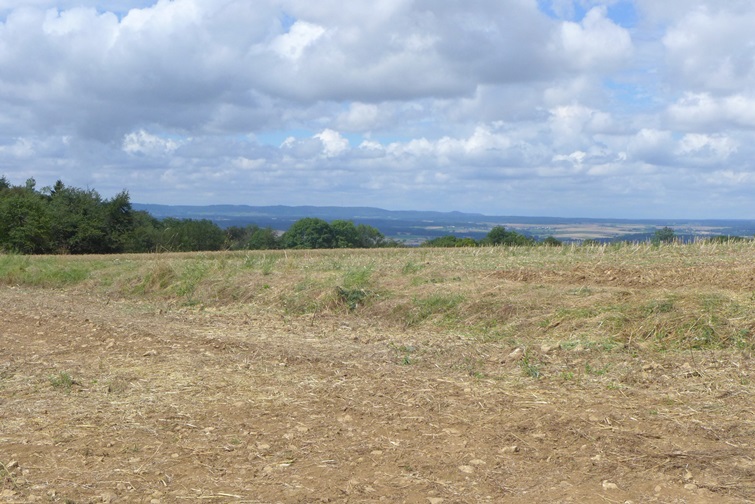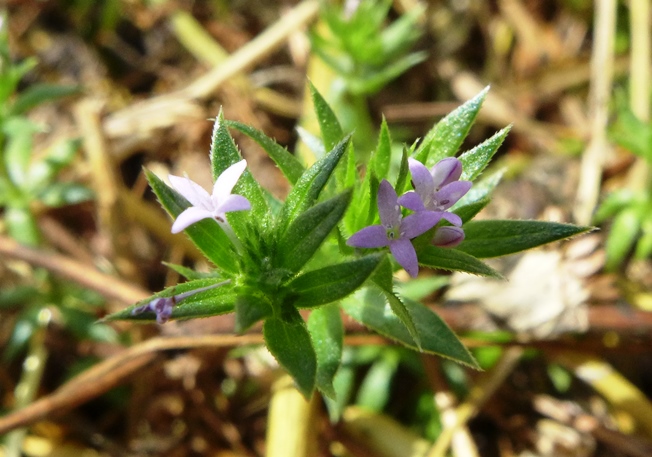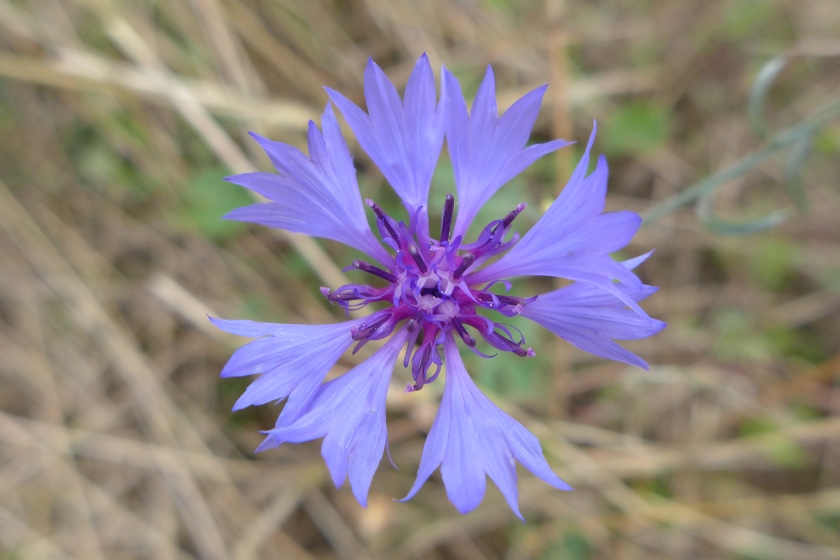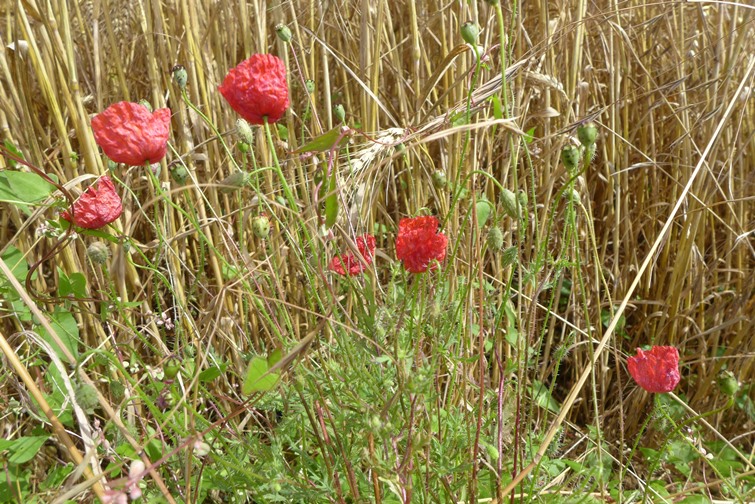I have recently moved to North East France, my home region. Around here, most fields at this time of the year are filled by wheat, barley, rye or oats, making wonderful golden tinted pictures in the sun. But in some fields cereals are all that can be seen. Not a single weed in sight, not the slightest green leaf to be spotted, like a dry, barren desert. And it gets even worse post-harvest, when heavy machinery has crushed the soil.

Hundreds years ago, one would have seen a flurry of colour on the margins of the fields, filled by arable weeds, or as we call them in French, “plantes messicoles” (from latin messio, harvest – this definition is slightly more restrictive than arable weeds). This beautiful little book from 1914 found in my grandfather’s collection describes over 100 plants from cultivated fields.
Sadly, decades of pesticide use and a change in cultural practices (increase in crop rotation, fertilisers…) have lead to a sharp decline in their abundance. In France, out of 102 recorded species, over half are in poor conservation status and 7 are presumed extinct.
But a 10 minutes walk in nearby fields still reveals some hidden diversity…this is one of my favourite arable weeds, Sherardia arvensis, a plant related to cleavers.

Fields are in fact dry, disturbed places, so they are often home to plants that can also be found in wastelands, along roads etc. such as Polygonum aviculare (hover your mouse on the pictures for names):
Two vines which creep around cereal stems and can be confused when in leaves are the false bindweed (Fallopia convolvulus, a distant relative of Japanese knotweed) and the true field bindweed (Convolvulus arvensis):
But the stars of the show are the true “messicoles”, plants which are so closely associated with harvest times. Two very pretty ones, Viola arvensis (a relative of garden pansies) and Kickxia spuria (a difficult to spell groundcover with spurred flowers also called cancerwort).
I was very shocked to see for the first time a wild cornflower (Centaurea cyanus), the iconic species symbol of the 1st World War fields, and also an important medicinal plant. Once common, they are now in decline, and are increasingly difficult to spot in summer fields. They are also threatened by the introduction of pink and white cultivated forms in popular wildflower seed mixes.

Of course one can’t think about arable weeds without mentioning the humble poppy (Papaver rhoeas), also a war symbol but this time for the UK and Commonwealth.

The French Botanical society TelaBotanica has launched a citizen science project, “Observatoire des Messicoles” to record the diversity of arable weeds still found in the country. They have also recently published an identification guide to the rarest arable weeds in France which can be downloaded here.
In the UK, arable weeds are mostly found in the warm cultivated fields in the South, so the situation is hardly better than in France: 54 species are considered as threatened, with 7 already extinct. For more information, and see this useful summary produced by the charity Plantlife: New Priorities for Arable Plant Conservation





















It’s a shame about cornflowers. I can only remember seeing deliberately planted ones, not wild ones.
Fascinating! In contrast, the little field plants of my country (Australia) that are in decline are those associated with our native grasslands. Some of these were farmed by the indigenous people who are no more; some just fare badly from over-grazing, exotic grasses and European-style cultivation. Thanks for an interesting post with great pictures.
Very sobering, but good to see your finds. Thanks for sharing them.